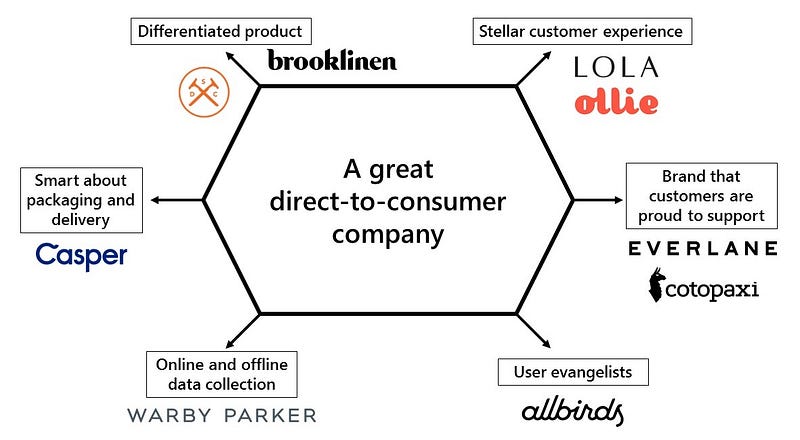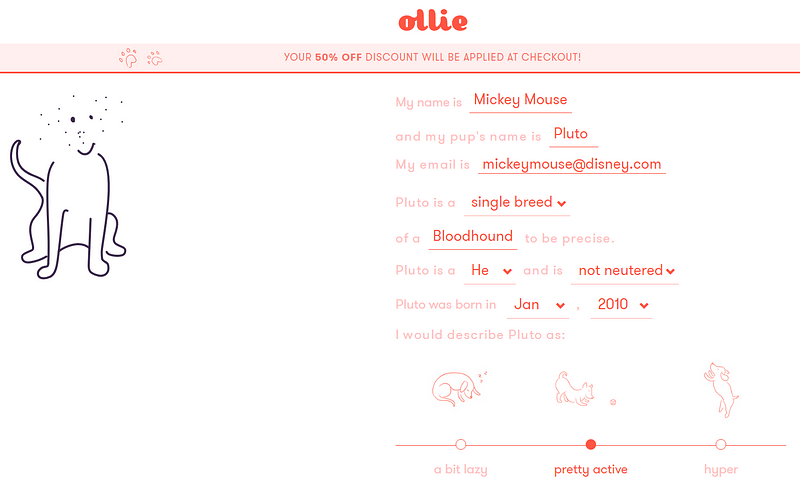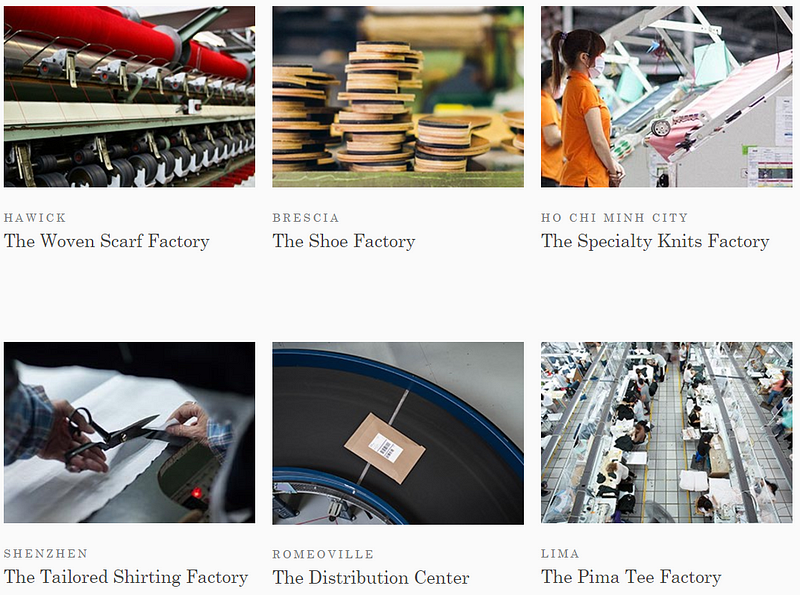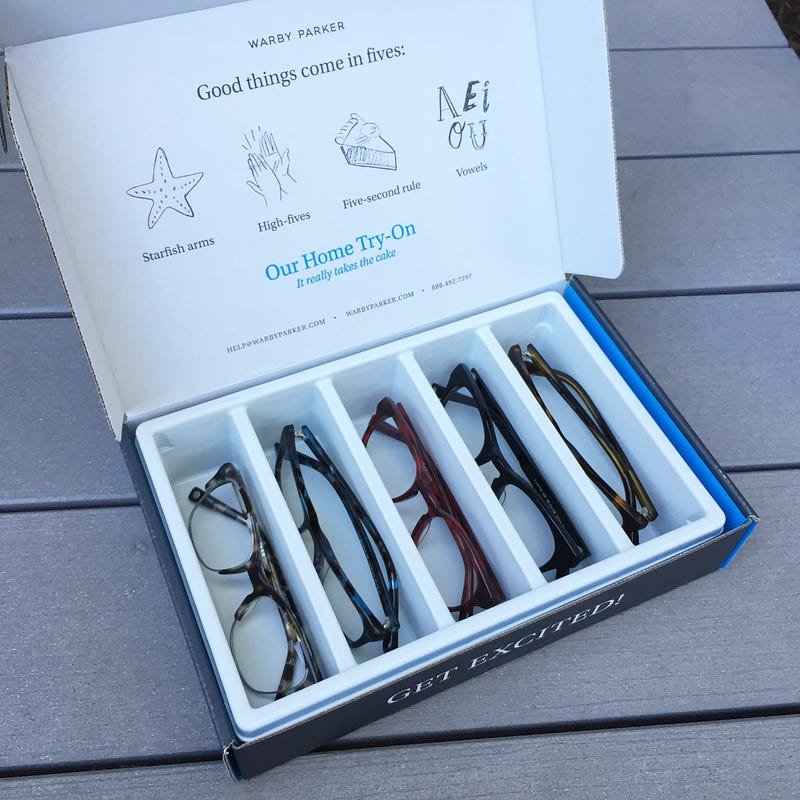6 Laws for Founders and Investors
Co-authored with Andreas Vandris.
From startups like Allbirds and Harry’s to larger companies like Tesla, the Direct-to-Consumer (D2C) business model is becoming increasingly popular.
Today, the supply of consumer products greatly outstrips the demand that exists in the market. As a result, consumers are demanding a new experience that big box retailers and other “middlemen” simply can’t provide. Companies want a way to reach consumers directly and control every aspect of that experience.
The rise of D2C companies follows off the back of what General Catalyst’s Hemant Taneja refers to as “economies of unscale.” Modular services have greatly reduced the barriers to launching a D2C strategy. Back in the early 2000s, it was difficult for an e-commerce startup to build and manage aspects of their business. Now, a startup can build an e-commerce website with Shopify, manage payments processing with Stripe, talk to customers with Intercom, and manage logistics and customer service through Fulfillment by Amazon.
Finally, the removal of the middleman and the associated 2x to 4x markup translates into higher margins for the producer and a lower cost for the consumer.
The D2C business model has proliferated throughout the startup world. Below, we have compiled the six laws for those interested in D2C startups, whether from the perspective of a founder, investor, or advisor.

Laws for D2C companies (A great D2C company…):
Law #1: Has a differentiated product on the basis of quality, style, value, convenience or a combination of those
Great D2C companies offer a product that is differentiated — the product could be higher quality, more stylish, a better value, more convenient, or a combination thereof. It is important that the company understands its differentiators in order to effectively communicate its value proposition and market to the end user.
Dollar Shave Club differentiated itself on value and convenience as identified on a slide in its Series A pitch deck. Its viral video focused on the great value (just $1 a month) and convenience (shipped to your door).
Even “commoditized” products can work in a D2C model with clear differentiation. Brooklinen is a D2C company which sells bedding, a product that is available at almost any home goods store or online from Amazon Basics. Brooklinen’s motto of “Luxury Bedding, Underpriced” succinctly shows that the company understands its two key differentiators: higher quality and better value.
Law #2: Offers a stellar customer experience
The key advantage of a D2C model is the ability to “own” the entire customer experience from product discovery to website interaction to post-purchase customer service. The majority of customers will interact with a D2C company exclusively through its website. Common elements of great websites include a modern, simple visual language, an emphasis on generous promotional packages (e.g. free trials with purchase, 100% satisfaction guarantee, etc.), and a no-friction e-commerce experience.
Lola, a feminine care company, offers one box of products free on the first shipment of a subscription. Ollie, a dog food company, prompts visitors to design their dog’s custom food and onboards them with a questionnaire that asks everything from the dog’s name to its physical activity level.

All these companies understand the lifetime value of a satisfied customer and attempt to build customer experiences that are accommodating, customer-friendly, and human.
Law #3: Builds a brand that consumers are proud to support
Consumers increasingly care about what goes into their products and how the companies that produce them are positively impacting the world.
Companies such as Cotopaxi and Allbirds have certified as B Corps to pursue financial profit and social and environmental impact with equal commitment. Many use one-for-one programs (as popularized by TOMS with their shoes) or find other cost-effective ways to give back to local and global communities. For example, Casper donates a returned mattress to a local charity which is cheaper than shipping the mattress back, refurbishing, and then reselling it.
Other D2C companies have embraced transparency to instill pride in their customers. Everlane, an online D2C retailer of basic apparel and accessories, has built its entire brand around its motto of “radical transparency.” It shows the production costs and markup for all its items and provides in-depth profiles of each of its factories.

Law #4: Converts customers into evangelists
It goes without saying, but successful D2C companies are able to convert their customers into evangelists. Customers want to be able to tell others about a great product made by a great company (as we saw in Law #3).
In some cases, companies accomplish this by penetrating and gaining a strong following in a specific niche as Allbirds did with Silicon Valley and VCs. In other cases, early adopters will post about products on social media or tell their friends without being incentivized through referral programs. If customers are sharing a product with others unprompted, then that is truly a great product.
Law #5: Collects actionable data about customers both online and offline
Because D2C companies control the entire customer experience, they are able to collect valuable data from both online and offline interactions. They can then use that data to understand what drives engagement and revenue in a way that non-D2C companies cannot.
For example, Warby Parker wanted to help its customers find the frames that they’ll be most likely to purchase. It sent its Home Try-On kit to customers, which allows them to receive five free frames to try on before purchasing. Using the subsequent purchase data, they built an online recommendation tool to guide prospective customers. Warby Parker linked the offline and the online to collect actionable data, increase customer satisfaction, and drive sales.

Law #6: Thinks intelligently about packaging and delivery
The vast majority of D2C companies will sell and ship physical products to the customer. Some are larger and more cumbersome (e.g. mattresses, sofas) to ship than others (e.g. razors, shoes), but great companies will smartly approach packaging and delivery.
Casper is a prime example of innovation in both these areas for a large product: a mattress. After observing the high shipping costs and hassle of bringing a mattress upstairs in narrow apartment buildings, Casper folded its mattress into a standard box that could be shipped by UPS for 1/10th the cost. As an added benefit, the unpackaging experience is a joy for customers (as evidenced by a quick look on YouTube).